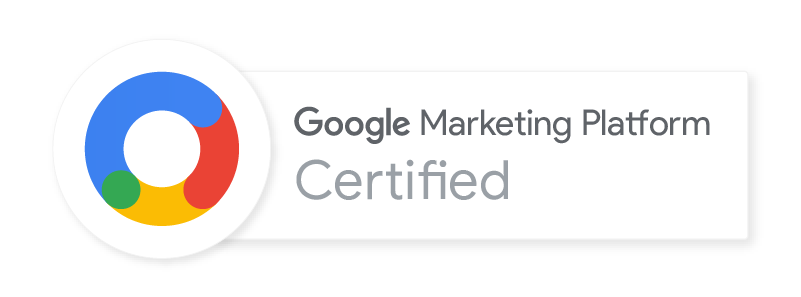
Imagine with me for a minute you’re being asked to give credit for a marketing result: A download of a killer asset, a lead form fill, a meaningful sales opportunity.
What’s “fair”? First touch? Last touch?
Well, I hope one of the two, because that’s what’s being sent to Salesforce by default from your web analytics platform, and probably the only way you’ll map it back to revenue for the company.
That’s also what you’re reporting out to investors in a lot of cases. Again, in part because it’s default in your analytics platform, and because a lot of investors are short on time and concerned only with what makes the company money right now.
But what if you as a marketer and an operator wanted to get a holistic picture of what drove that click, and that conversion? What if you wanted to understand how all your channels and campaigns working in concert drove someone from awareness to intent to conversion.
What if you wanted to build a model that fairly (read accurately), and patiently looked at the ways a conversion was assisted before the last click.
What’s unfair? Data-driven? Linear? Ramp? Why is it unfair?

Why are we tripping over ourselves to discredit innovative ways to credit a marketing channel for its impact?
If that’s a soft part of the process like a 15-second TV spot, a billboard walk-by, or a display ad impression:
Why are we willing to spend inordinate amounts of money on a branding effort unless we’re prepared to hold it to a direct response level of accountability?
It’s not good enough any more.
That’s where attribution products come in:
Google Attribution: https://www.google.com/analytics/attribution/features/
Facebook Attribution: https://www.facebook.com/business/help/458681590974355
Going further, if you’re really serious about attribution and need a tool that allows you to model the incremental lift of every touchpoint for both purchasers AND non-purchasers, check out Convertro. Alternatively, Google’s addition of a paid advanced-attribution product (Attribution 360) from their Adometry acquisition back in 2014 gives a similar ability to model incremental lift for budgetary decision making.
It’s crystal clear that the biggest ad platforms in the world are trying to solve these attribution problems. So why should you care? Because the answer these tools give you won’t be:
“Do more of this one thing and you’ll win!”
It’ll be:
“Do more of these 6 things in conjunction and you’ll win. And here’s the incremental value for each.”
But the bigger problem is that all these ad-platform provided tools have an underlying conflict of interest: They’re also channels that want a piece of your marketing budget’s pie.
For example: have you ever thought about just how much your softer or top-of-funnel recruitment channels affect the likelihood of a paid-search or organic search conversion down the line? How interesting then, that the #1 purveyor of paid and organic search would offer an attribution model that, by default, holds up last-click attribution as the model to follow.
And soon they’ll be swaying you with even fancier-looking models, espousing greater authority and sophistication about how big the pie is and why they deserve a 30% slice of pumpkin instead of apple. Or why you should stop spending your money on Apple pie and buy lemon-meringue-by-Microsoft instead.
It’s going to get confusing really fast for any of us, unless we know how to frame our business needs first in this attribution conversation, and get the data to serve us instead of the ad platforms.
How do we do that?
Here’s the gut test for attribution modeling in your organization:
- Which channels suffer as a result of x/y/z model? Is it Direct?
- Are particular marketing vehicles undervalued consistently in one model and overvalued consistently in another. Why?
- Does each attribution tool tell the same story and make the same recommendation?
- Is the recommended model or custom model making sense for my product/my sales cycle/my lag time?
- Does the tool factor in offline results? How are they doing it? Geofencing or with hardware? Do they support both?
- Do we need to know exactly how much incremental lift we got from an ad or a channel for budgeting purposes? Or is it enough to say “these things seem to work well together”?
So, why am I asking these questions now, in the year of our lord 2018? Because I asked the same questions in 2014 and couldn’t get a straight answer from anyone still married to last-click. And that was from paid marketers who stood a lot to gain from attribution.
Hopefully these questions can help you start the process of questioning simpler or default models, and set your business up to run its marketing strategy with a forward-looking, data-driven approach.







Great post, Michael. Thanks for posing some key questions.